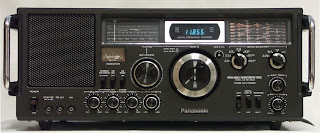WASHINGTON: Pentagon officials are drafting new policy that would officially recognize the electromagnetic spectrum as a “domain” of warfare, joining land, sea, air, space, and cyberspace, Breaking Defense has learned. The designation would mark the biggest shift in Defense Department doctrine since cyberspace became a domain in 2006. With jamming, spoofing, radio, and radar all covered under the new concept, it could potentially bring new funding and clear focus to an area long afflicted by shortfalls and stovepipes.
The new electromagnetic spectrum domain would be separate from cyberspace, although there’s considerable overlap between the two. “Wireless” is just another word for “radio.” Any wireless network relies on radio frequency transmissions that can be jammed bytraditional electronic warfare like any other RF device — or it can be hacked by wirelessly transmitted malware, in a hybrid of electronic and cyber attack. But the consensus among officials and experts seems to be that the electromagnetic spectrum world — long divided between electronic warriors and spectrum managers — is so technologically complex and bureaucratically fragmented by itself it must be considered its own domain, without trying to conflate it with cyberspace.
Cyber has certainly gotten more attention and, often, money than the electromagnetic spectrum. Would making the spectrum a domain fix that? It would not magically manifest the missing $2 billion a year the Defense Science Board says is needed to rebuild American electronic warfare capabilities such as jamming. Nor would calling the spectrum a domain somehow turn back the clock on the 20 years China and Russia have spent catching up while American electronic warfare largely stood still. Nor would it reduce the American military’s dependence on inherently vulnerable wireless networks for everything from commanding troops to sharing intelligence to flying drones to knowingexactly where we are.
But instead of trying to fix such complexly interrelated problems piecemeal, it would help to have a big picture endorsed at the highest levels of the Pentagon. No less a figure than Deputy Defense Secretary Bob Work has chartered an “electronic warfare executive committee” (EXCOM) to advance a “department-wide” approach to the problem.
I first heard of the draft “domain” policy almost in passing during a presentation last week to the Association of Old Crows, an electronic warfare group, by a contractor for Defense Department’s Chief Information Officer. “The policy…is in the works,” said Troy Orwan, a retired Air Force EW officer himself, “and in that policy we are going to ask the Secretary of Defense and the Chairman of the Joint Chiefs, to declare a sixth domain, EMS, to man, train, and equip.”
Yesterday, Pentagon CIO Terry Halvorsen confirmed in a statement to Breaking Defensethat his office “will be the Departmental lead for these efforts” to explore a wide range of policy options for the electromagnetic spectrum, “to include the potential recognition of the EMS as a domain.
The new electromagnetic spectrum domain would be separate from cyberspace, although there’s considerable overlap between the two. “Wireless” is just another word for “radio.” Any wireless network relies on radio frequency transmissions that can be jammed bytraditional electronic warfare like any other RF device — or it can be hacked by wirelessly transmitted malware, in a hybrid of electronic and cyber attack. But the consensus among officials and experts seems to be that the electromagnetic spectrum world — long divided between electronic warriors and spectrum managers — is so technologically complex and bureaucratically fragmented by itself it must be considered its own domain, without trying to conflate it with cyberspace.
Cyber has certainly gotten more attention and, often, money than the electromagnetic spectrum. Would making the spectrum a domain fix that? It would not magically manifest the missing $2 billion a year the Defense Science Board says is needed to rebuild American electronic warfare capabilities such as jamming. Nor would calling the spectrum a domain somehow turn back the clock on the 20 years China and Russia have spent catching up while American electronic warfare largely stood still. Nor would it reduce the American military’s dependence on inherently vulnerable wireless networks for everything from commanding troops to sharing intelligence to flying drones to knowingexactly where we are.
But instead of trying to fix such complexly interrelated problems piecemeal, it would help to have a big picture endorsed at the highest levels of the Pentagon. No less a figure than Deputy Defense Secretary Bob Work has chartered an “electronic warfare executive committee” (EXCOM) to advance a “department-wide” approach to the problem.
I first heard of the draft “domain” policy almost in passing during a presentation last week to the Association of Old Crows, an electronic warfare group, by a contractor for Defense Department’s Chief Information Officer. “The policy…is in the works,” said Troy Orwan, a retired Air Force EW officer himself, “and in that policy we are going to ask the Secretary of Defense and the Chairman of the Joint Chiefs, to declare a sixth domain, EMS, to man, train, and equip.”
Yesterday, Pentagon CIO Terry Halvorsen confirmed in a statement to Breaking Defensethat his office “will be the Departmental lead for these efforts” to explore a wide range of policy options for the electromagnetic spectrum, “to include the potential recognition of the EMS as a domain.


No comments:
Post a Comment